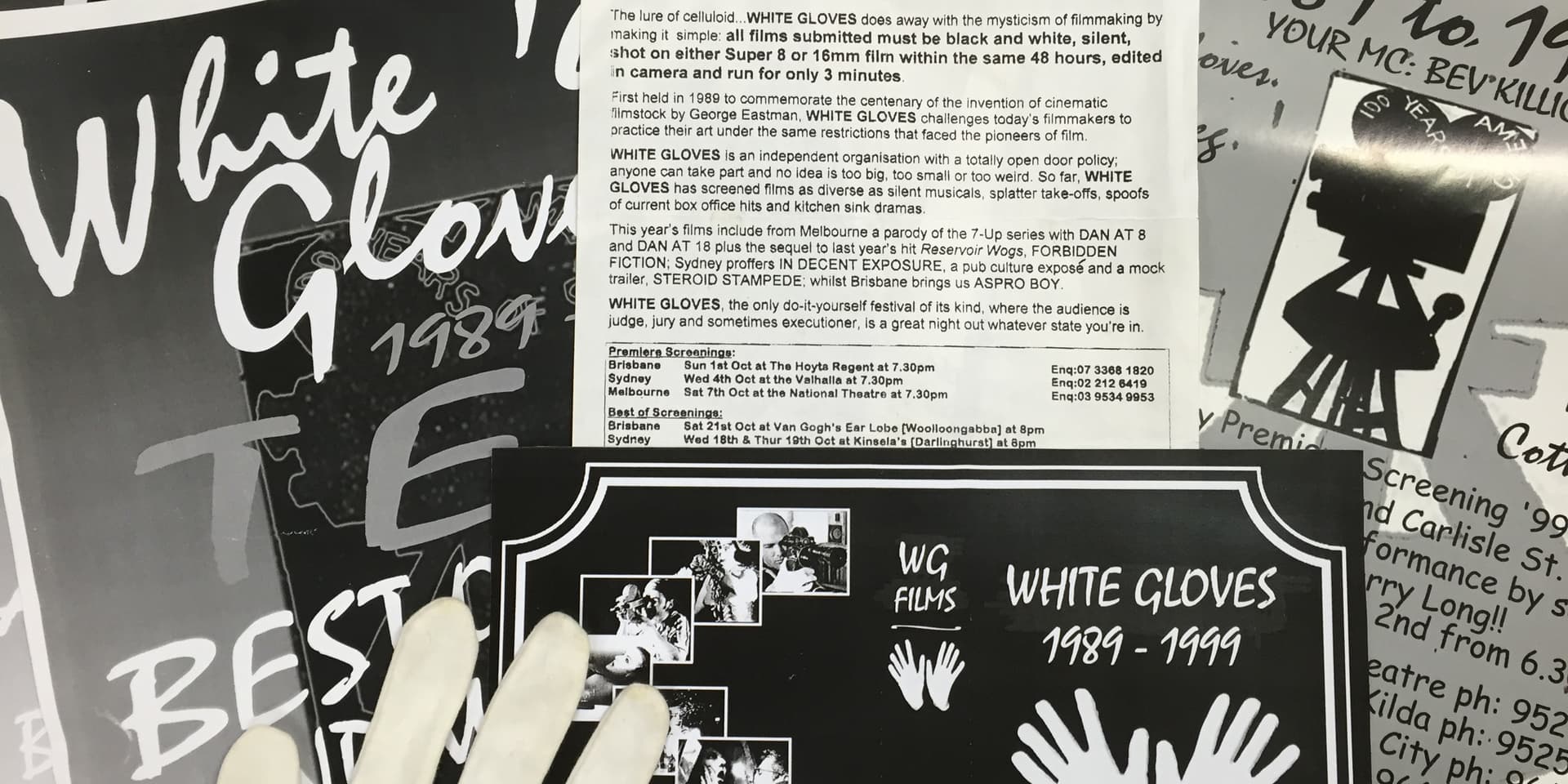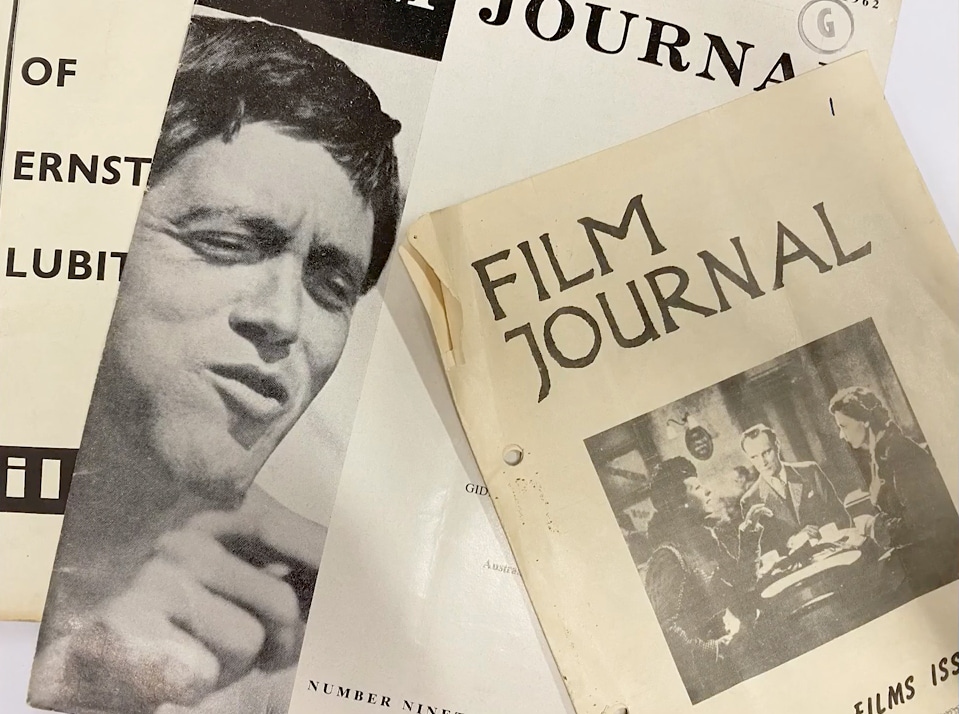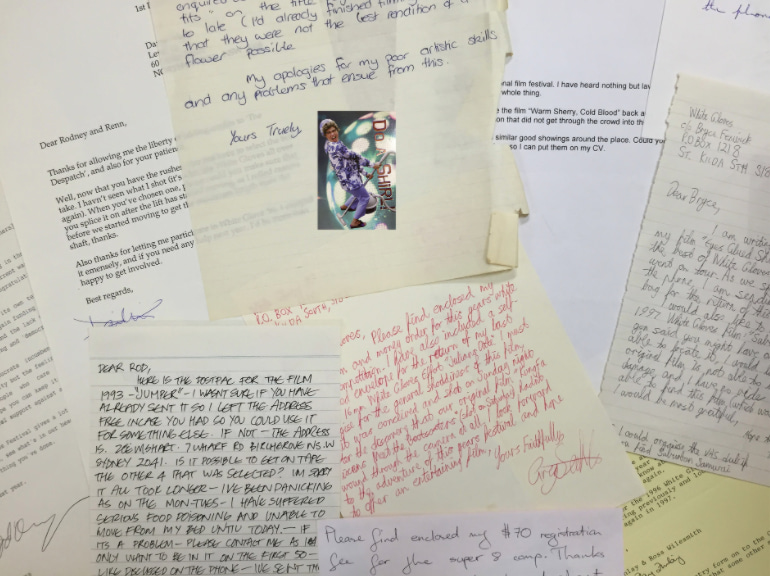
Culture Quiz: AFI Research Collection
The AFI (Australian Film Institute) Research Collection is a unique and highly regarded resource of international importance, proudly curated by RMIT Culture.
Year round, the collection is open to students, staff and the public to assist them with research projects, assignments, or to quench that cinema history thirst.
The Collection houses a vast array of local and international cinema content, including newspaper clippings, promotional material, films, journals and much more. The AFI Research Collection is an integral part of Melbourne cinema culture and remains accessible online during restrictions.
Quiz
1. Where is the AFI Research Collection (AFIRC) located?
The AFIRC has a physical location on level 6 of the Swanston St library. Though they have closed their doors during restrictions, much of the collection can still be accessed online here.
2. Dr Adrian Danks recently took part in an Unpacked video discussing Melbourne Film Culture and MUFS. Which Melbourne suburb did he describe as “one of the key centres of film culture and independent production in Australia”?
a) Spotswood
b) Carlton
c) Toorak
d) Brighton

b) Carlton. Unpacked is a series of videos by RMIT Culture that detail significant aspects of its collections, including those featured in AFIRC. Danks’ presentation details the history and importance of Melbourne film culture and Melbourne University Film Society, highlighting the film journals held by AFIRC. You can watch the epicsode here.
3. In which decade was the AFIRC established?
Hint: the collection was located on Cardigan Street when it first opened.
The 1970s. The AFIRC was originally housed on Cardigan Street in a building known as the George Lugg Library, named after a founding governor of the AFI. Now, as mentioned, it is housed in RMIT, providing mutually beneficial research and funding opportunities for staff, students and the public. Read more about AFIRC’s fascinating history here.
4. On a poster produced by which organisation can you find the tagline “you don’t have to be dead to hold a retrospective”?
a) MONA
b) Sydney Filmmakers Co-op
c) RMIT Gallery
d) Village Cinemas
b) Sydney Filmmakers Co-op – designed by Jan Mackay, Sydney 1982. It was used to promote a series of short feature screenings made by the Co-op, that ran in Darlinghurst in 1982. The poster is housed at the AFIRC. You can see the poster, and hear filmmaker John Hughes discuss it here.
5. AFIRC librarian, Olympia Szilagyi, recently participated in The Capitol’s Take 2 series. Which film did she recommend as a lockdown viewing?
Stephen Wallace’s 1980 Stir. The film is based on the writer's experience being in prison during the 1974 Bathurst Correctional Complex riots. You can watch Olympia’s Take 2 here. Note: Olympia strongly recommends going in to the film blind, and not watching the trailer. Make sure to check it out!
6. Within AFIRC’s Gems of the Collection, Sian Mitchell details a film festival that ran from the late 1980s until the early 2000s. What does the title of the White Gloves Film Festival refer to?

The White Gloves Film Festival title references an editing feature from early cinema, where white gloves were used when handling film. It was also a prerequisite that white gloves were featured in the films that successfully entered the festival. For more information, you can read Sian’s article here.
7. 2017 AFIRC Research Fellowship winner, Alex Heller-Nicholas, wrote an article for Overland Journal that was published in July 2017. What was the focus of her article?
a) representation of children in cinema
b) gender pay gap in cinema
c) women as film critics
d) animal rights in film
c) The article was centred around women as film critics. The article details the history of women’s film criticism in Australia, and the gender gap within the industry more broadly. Heller-Nichols completed some amazing articles in the duration of her fellowship, including the Overland article and a profile of filmmaker Ann Turner.
8. The AFIRC celebrates cinema history and milestones from all around the globe. In 2019, a book edited by Daniel Fairfax was launched by Dr Adrian Danks that celebrated a century of cinema from which region?
a) USA
b) Japan
c) Soviet Union
d) Great Britain
d) the Soviet Union. 100 Years of Soviet Cinema was developed by our friends at Senses of Cinema and marks one hundred years since the Russian Revolution. The book details over more than sixty films by a variety of filmmakers and is published in full colour.
- PEG
Acknowledgement of Country
RMIT University acknowledges the people of the Woi wurrung and Boon wurrung language groups of the eastern Kulin Nation on whose unceded lands we conduct the business of the University. RMIT University respectfully acknowledges their Ancestors and Elders, past and present. RMIT also acknowledges the Traditional Custodians and their Ancestors of the lands and waters across Australia where we conduct our business - Artwork 'Sentient' by Hollie Johnson, Gunaikurnai and Monero Ngarigo.